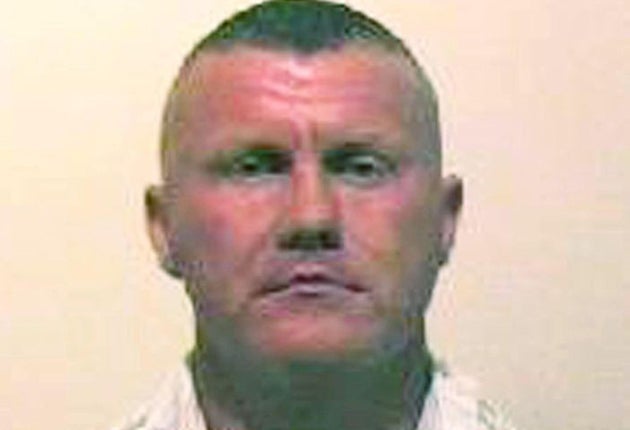Raoul Moat Taser weapon was ineffective

Unauthorised shotgun Tasers used by police in the stand-off with crazed killer Raoul Moat were not an effective non-lethal weapon, a Home Office expert told an inquest today.
The hearing at Newcastle Crown Court was told that in testing "more often than not" the X-Rep cartridges did not achieve their purpose of incapacitating the target.
Officers fired twice at the 15st 7lb (100kg) fugitive as he prepared to kill himself with the sawn-off shotgun he had already used to blast his ex-girlfriend Samantha Stobbart, execute her new lover Chris Brown and blind Pc David Rathband.
The inquest has heard that police fired the X12 Tasers - which were licensed only for testing - because standard X26 handheld Tasers did not have the necessary range.
Graham Smith, a Home Office physicist who advised the Association of Chief Police Officers on weapons, explained to the jury how the X12 shotguns fire X-Rep cartridges at a speed of 18 metres per second.
The idea is that the projectile's nose sticks into the target's torso, and if he then grabs trailing wires to pull it out, an electrical circuit is made, causing incapacitation.
But tests showed that the secondary contact with skin, required to complete the circuit often did not happen.
Newcastle Coroner David Mitford asked if the witness considered it an effective non-lethal weapon.
Mr Smith replied: "I think conceptually it could be but in its current configuration I don't think it is."
Mr Smith said "more often than not", it did not incapacitate.
He agreed that there were few alternatives available to police given Moat was 10 metres away, sitting down and pointing a shotgun at his head during the stand-off in Rothbury, Northumberland.
A marble-sized ball bearing fell from the hospital bed after medics in the A and E department of Newcastle General Hospital finished treating Moat, the jury heard.
Nurse Susan Booth said the ball was left on the floor of the resuscitation room until scenes of crime police officers came.
It was believed this was the round which Moat fired into his head through his right temple.
Dr Nigel Cooper, the pathologist who carried out a second post mortem at the request of the family on 21 July, told the inquest: "The cause of death was a gunshot wound to the head.
"The entry wound was 35mm above the right ear and 30mm in front of it.
"It had some features to indicate it had been fired at very close range.
"There was soot in the wound and it was a circular wound with a couple of tears in the skin around the wound.
"That's something that suggests the gun was fired in very close contact with the skin.
"It was very close, if not actually in contact."
Although Moat still had a pulse, he would have lost consciousness immediately, the pathologist said.
"Essentially the shot destroys any tissue in its path," he said.
"In Mr Moat's case it had travelled through the central part of the brain, which means that from the moment it was fired he would have been unaware of anything."
The inquest was adjourned until tomorrow.
PA
Subscribe to Independent Premium to bookmark this article
Want to bookmark your favourite articles and stories to read or reference later? Start your Independent Premium subscription today.
